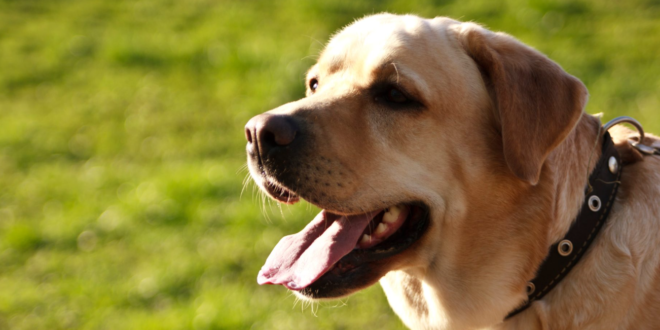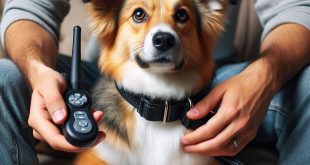How To Train My Dog To Walk On A Leash – As man’s best friend, dogs are considered as one of the most loyal and loving pets one can have. But let’s admit it, one of the most challenging aspects of having a furry companion is training them to behave appropriately. Walking your dog on a leash is an activity that has numerous benefits, such as providing them with the necessary exercise and socialization they require. However, training your dog to walk on a leash can be a daunting task, especially for new pet owners. In this article, we will guide you on how to train your furry friend to walk on a leash like a professional.
Table of Contents
1. The Basics of Leash Training: Teaching Your Pup to Walk beside You
Leash training is an essential skill that every dog owner must develop to ensure that their pup is well-behaved and safe. The process of training your dog to walk beside you on a leash can seem daunting, but with the right approach, it can be a straightforward and enjoyable experience for both you and your furry friend. Here are some tips on how to teach your pup the basics of leash training.
First, choose the right equipment. A well-fitted collar or harness and a sturdy leash are necessary for successful leash training. A six-foot leash is ideal for beginners. Next, teach your dog to come when called. This skill is crucial as it ensures that your pup will stay with you on walks. Start by calling your pup to you and rewarding them with treats or verbal praise when they come.
Once your pup has mastered the “come” command, it’s time to start walking together on the leash. Begin by walking around your yard or in a quiet location, rewarding your pup for staying beside you. If your pup pulls or runs ahead, stop walking, and wait for them to come back to your side. Be patient, consistent, and most importantly, have fun with your pup! Remember that leash training is an essential part of building a strong bond with your dog, so take the time to do it right.
2. Developing Good Leash Habits: Techniques to Improve Your Bond With Your Dog
Leash walking is a crucial part of a dog’s daily exercise routine. It is also a great way to bond with your furry friend while ensuring their safety. However, walking on a leash does not come naturally to dogs, and developing good leash habits takes time and patience. Here are some techniques to help you improve your bond with your dog while leash walking.
– Start with basic training: Before you can start leash walking, your dog needs to develop basic obedience skills. Train them to sit, stay, heel, and come on command. Use positive reinforcement techniques, such as treats and praise, to make the training more enjoyable for your dog. Once your dog has mastered these basic commands, you’re ready to move onto leash training.
– Choose the right leash and collar: The leash and collar you use can impact your dog’s comfort and safety. Choose a flat collar that fits snugly around your dog’s neck and a leash that’s long enough to allow your dog to walk comfortably yet close enough to you for control. Consider using a harness if your dog has a tendency to pull on their leash, as it can help distribute the pressure evenly across the body.
– Be consistent: Consistency is key to developing good leash habits. Use the same commands and techniques every time you walk your dog on a leash. Reward good behavior and correct bad behavior immediately. With consistency, your dog will learn what’s expected of them and feel more comfortable on their leash walks.
By using these techniques, you’ll develop good leash habits with your dog, making your walks more enjoyable and safer for both of you. Remember to have patience and enjoy the process of bonding with your furry friend.
3. Positive Reinforcement Strategies: How to Encourage and Reward Good Behavior
Positive reinforcement is one of the most effective ways to encourage and reward good behavior in individuals. This type of reinforcement is based on the principle that people are more likely to repeat behaviors that result in positive outcomes. By rewarding good behavior, individuals are more likely to continue demonstrating positive behavior.
There are several strategies that can be used to encourage and reward good behavior, including verbal praise, nonverbal praise, tangible rewards, and natural consequences. Verbal praise involves praising an individual with words, such as saying “well done” or “great job.” Nonverbal praise involves demonstrating approval without words, such as clapping or a thumbs-up. Tangible rewards involve giving an individual something tangible in exchange for good behavior, such as a sticker or a toy. Natural consequences involve allowing an individual to experience the natural outcome of their positive behavior, such as allowing them to stay up later if they finish their homework on time.
Regardless of the strategy used, it is important to ensure that reinforcement is immediate and consistent. This means that rewards should be given right after good behavior is demonstrated and given every time the behavior is demonstrated. In addition, it is important to focus on the behavior rather than the individual, as this helps to ensure that the individual understands why they are being rewarded. By using positive reinforcement strategies effectively, individuals can be encouraged and rewarded for demonstrating good behavior.
4. Handling Common Challenges: Addressing Distractions, Pulling, and Aggression On the Leash
One of the most common challenges every dog owner faces is distractions, pulling, and aggression on the leash. These behaviors can make walking with your furry friend a frustrating and stressful experience. But, with patience, training, and consistency you can overcome them and enjoy a peaceful walking experience.
To address distractions, start by teaching your dog the “heel” command. This will help them understand the proper position to walk in and stay focused on you. If your dog is constantly distracted, try using a shorter leash to keep them closer to you. You can also bring treats or toys to redirect their attention back to you whenever they get distracted.
Pulling on the leash is another problem that many dogs struggle with. To address this, use a harness that discourages pulling, and practice obedience training, like “stop” and “wait” commands, to teach your dog to walk calmly. If your dog continues to pull, try stopping in your tracks until they stop as well. Praise them when they do, and keep repeating until they understand that they need to walk at your pace.
Aggression on the leash is a more serious issue that requires professional help. However, in some cases, it can be addressed by establishing leadership and confidence. Walk with a confident and assertive posture, and teach your dog to trust and respect your leadership. You can also use positive reinforcement training and exposure therapy to help your dog learn how to behave around other people and dogs. Remember, every dog is different, and what works for one may not work for another. Be patient, consistent, and always consult with a professional if needed.
5. Tips for Successful Leash Training: Finding the Right Gear and Maintaining Consistency
When it comes to successful leash training, finding the right gear is crucial. The right leash and collar can make all the difference in how your dog responds and behaves while on a walk. Here are some tips on choosing the right gear for your pup:
– Choose a high-quality leash that is sturdy and comfortable to hold.
– Consider your dog’s size and behavior when selecting a collar or harness. A flat collar works well for most dogs, but a harness may be necessary for dogs with breathing or neck issues.
– Avoid retractable leashes as they can be difficult to control and may encourage pulling.
Along with the right gear, consistency is key in leash training. Here are some tips for maintaining consistency:
– Use the same commands and signals every time you go for a walk.
– Avoid pulling on the leash or letting your dog pull you.
– Reward good behavior with treats or praise.
– Practice walking in different environments to help your dog adjust to different situations.
Remember, leash training takes time, patience, and consistent effort. By following these tips and adapting to your dog’s individual needs, you can ensure a successful and enjoyable walking experience for both you and your furry friend.
Training a dog to walk on a leash can be a challenging task, but a necessary one. With patience and positive reinforcement, it is possible to get your dog accustomed to the leash. Ultimately, leash walking boils down to good communication between you and your pup. By setting clear expectations and using training tools to reinforce behaviors, your pup can learn to be a confident and comfortable leashed walker in no time. And once they do, the world of safe outdoor exploration is yours to enjoy.
 Treat For Dog – Brain Training for Dogs, Dog Training & Obedience Discover Treat For Dog and get your pup on the path to smarter, happier, and healthier living with brain training for dogs.
Treat For Dog – Brain Training for Dogs, Dog Training & Obedience Discover Treat For Dog and get your pup on the path to smarter, happier, and healthier living with brain training for dogs.




